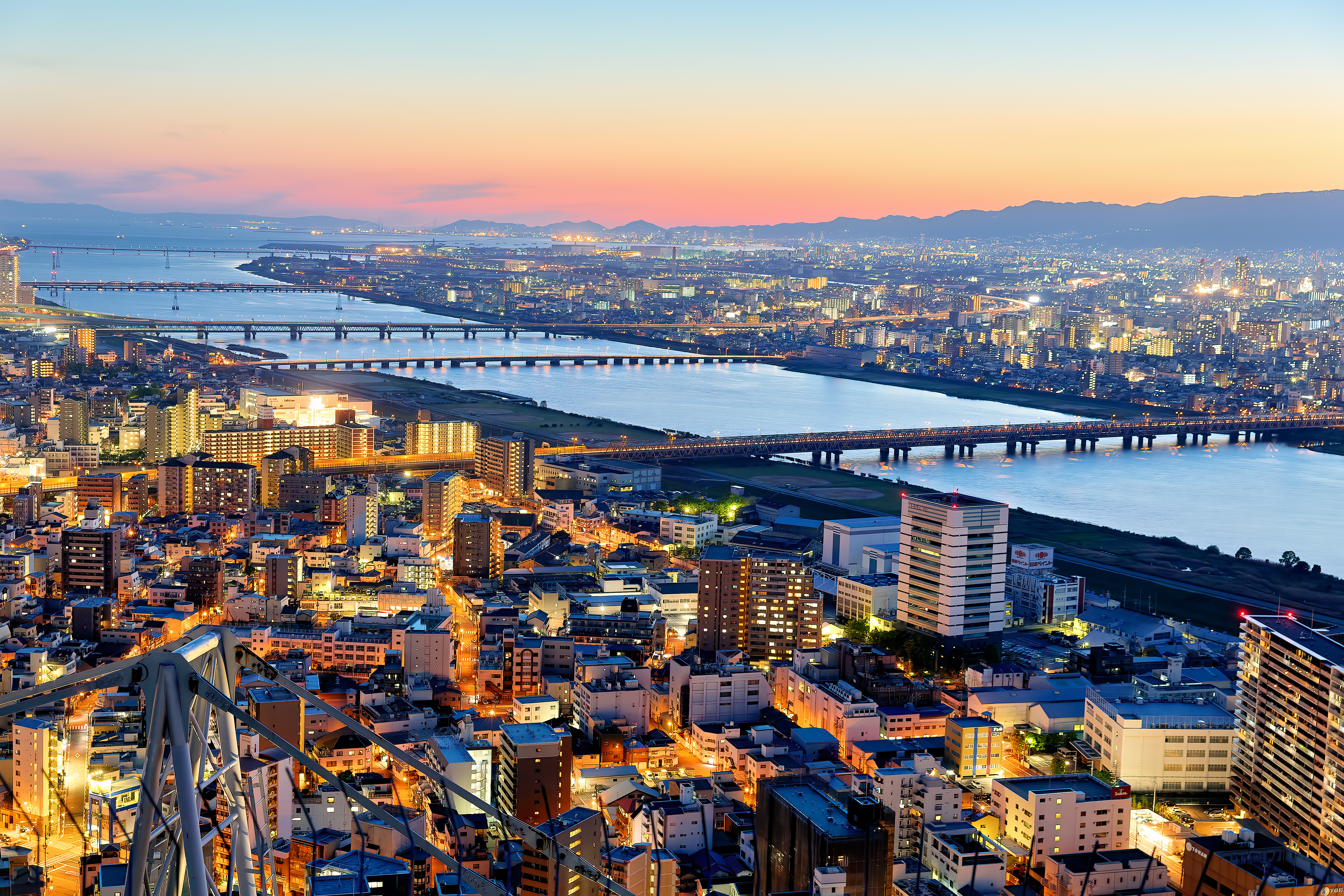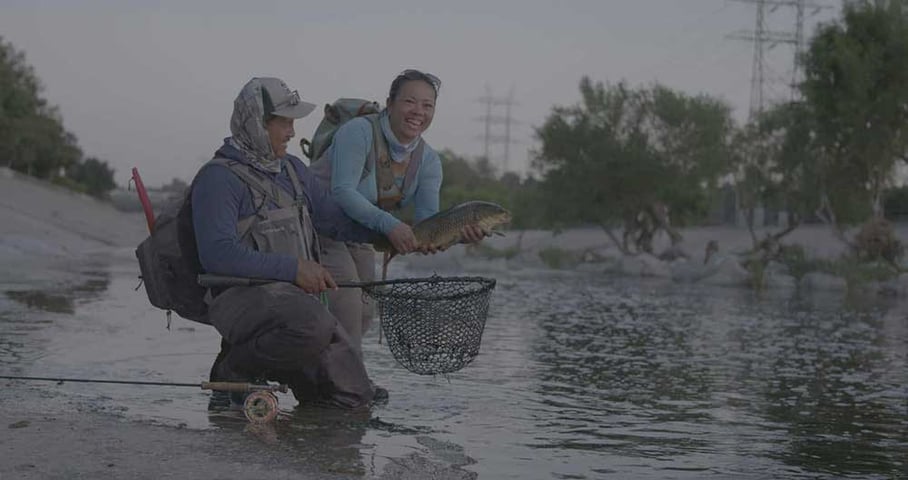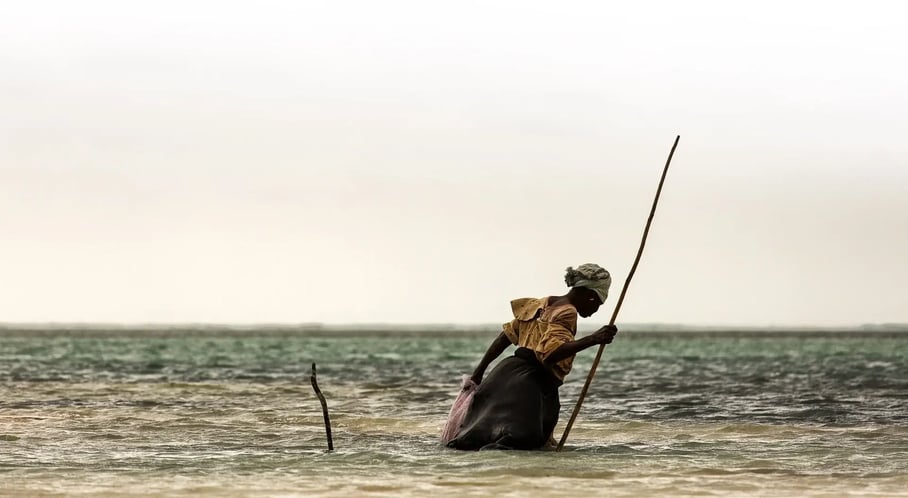Los Angeles River: The Concrete River
RIVERS ARE LIFE
The Concrete River
Cuando piensas en Los Ángeles, ¿qué te imaginas? Ahora intenta pensar como un pescador con mosca.
“When you’re standing on the LA River, it’s like fishing in any river,” says Lino Jubilado, an LA River fly fisherman. “You’ve got duck swimming around you; you’ve got geese guarding their nests. You can easily mask out all the sound from all the traffic of the freeways and the overpasses.”
Jubilado has been fishing the LA River for over 40 years. Early in the morning, he makes himself a cup of coffee, sits down, and ties flies. Then, he goes to the river.
“Up and down the river, there are natural sections that are just loaded with carp,” says Jubilado. These carp have many nicknames – sewer salmon, gutter grouper, Tijuana trout – but to him, they’re golden nuggets. While many people think of the river as a sewer, Jubilado and other fly fishermen see the beauty in it.
“I think the LA River seems to be a pretty good example of how our natural drive for progress and ingenuity – let’s say, engineering a waterway so it doesn’t flood the community – can have these negative consequences that aren’t necessarily foreseen at the time,” says Michael Affeldt.
“I could walk for miles, and it was green, there were fish, and you hear this water and the sound – it’s so therapeutic,” says Analiza Del Rosario, a fly fisherwoman on the LA River.
When she was 12 years old, she moved from the Philippines to LA, where she’s been ever since. Rosario admits she used to be a materialistic girl with a love for handbags and travel.
“My love for the outdoors and travel really helped me fall in love with flyfishing,” says Rosario. “And so slowly but surely, I was getting rid of my Chanel bags for my flyrods and meeting cool people, like Lino, and a bunch of other women – I love it.”
A Guard Against Floods
While the river is a sliver of refuge from the hustle and bustle of the city, it’s not what it once was. Before the area was colonized, the Gabrielino-Tongva Indian Tribe relied on the river as their primary source of food and water. Not long after Spanish explorers settled the area, they started experiencing floods.
“In order to create a future where humans connect with nature, we need to recognize that we are part of nature,” says Dennis Mabasa.
Then, in 1914, a severe flood caused $10 million in damage, ultimately leading to the formation of the Los Angeles County Flood Control District. Smaller-scale solutions were implemented, but it wasn’t until 1938 that things really changed.
“The Army Corps of Engineers were asked to figure out a way to control the flooding and then make it just wash straight down into the ocean, so they decided to encase the entire river in concrete,” says Jubilado.
By 1960, a 51-mile, engineered waterway had been crafted.
“We have a very functional and effective engineered drainage system, but of course, a severely degraded riparian habitat system, whereas LA used to be full of wetlands and streams and creeks. Now many of those are underground or paved over,” says Michael Affeldt, director of the LARiverWorks team in Mayor Eric Garcetti’s Office of City Services. Affeldt has been in LA for 16 years and part of LA River Revitalization for about 11 years.
“You’re getting runoff from all the sewers, all of the gutters, on the streets, it all piles up here in the LA River, which is why there’s so much trash,” says Jubilado. “When it rains, it comes right off the sidewalk. Lots of shopping carts, clothes – you could put together a good wardrobe any time of the day if you wanted to in this place.”
Improvements Being Made
Affeldt and his team have made physical improvements to help the river: screens at storm drains, bioswales, and green streets in some parts of the city. However, the massive volumes of water that drain off city streets during a rain event still carry a lot of trash into the river.
“The waste that we’re creating eventually goes somewhere – it goes into the LA River, and that’s why we have to do these cleanups,” says Dennis Mabasa, director of education at Friends of the LA River (FoLAR).
More than organizing cleanups along the LA River, FoLAR focuses on connecting people to the river. That could be anything from nature walks, writing workshops, yoga sessions, or becoming a community scientist and detecting bats or conducting bird surveys along the river.
“The only way that we’re going to solve big issues like climate change, social justice issues, is through community-level solutions,” says Mabasa.
If you live in LA, you can join the “river-lution” by joining a cleanup, attending a community event, advocating with FoLAR, or even just visiting the river. As Jubilado says, “Once you fall in love with it, you’ll want to protect it.”
For those outside of LA wanting to get involved, you can become a member of FoLAR, make a donation, sponsor an event, or attend their annual fall gala.
Watch the LA River film “River of Angels” HERE.
Share this
You May Also Like
These Related Stories

Fred Tutman: The River Keeper

River Restoration Success Stories: Lessons Learned and Best Practices



